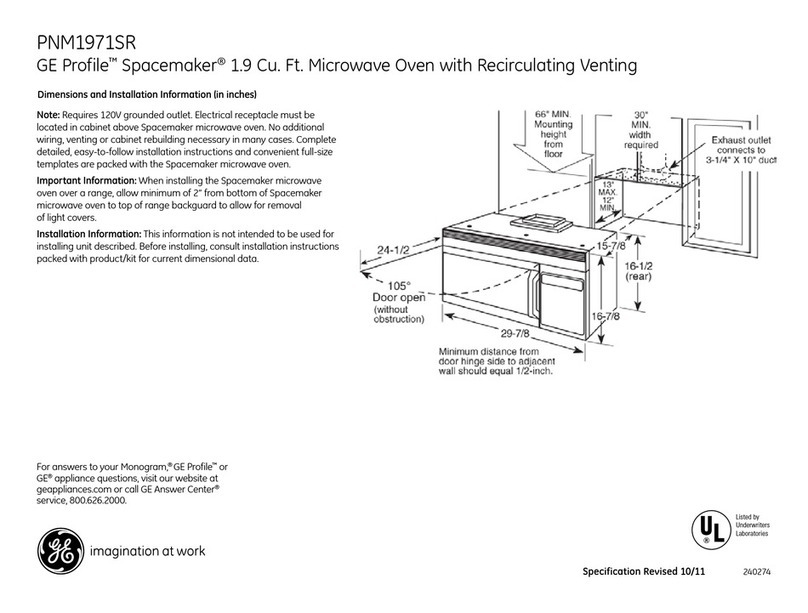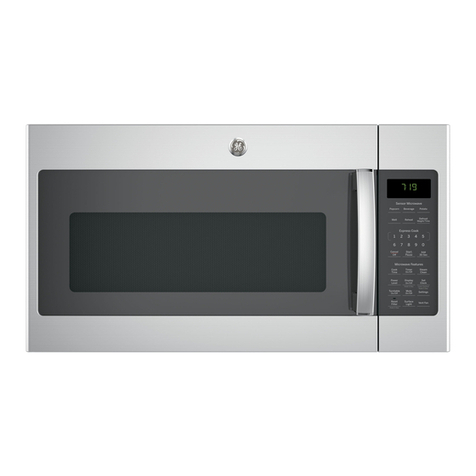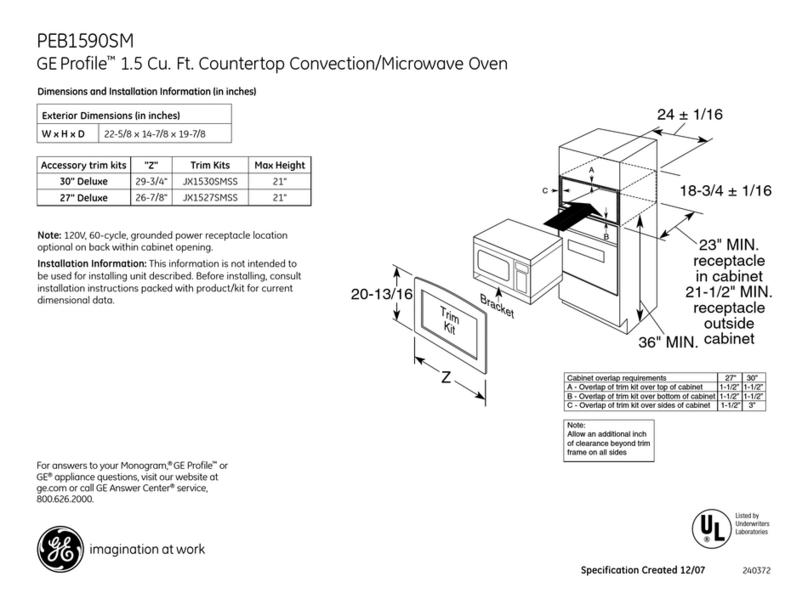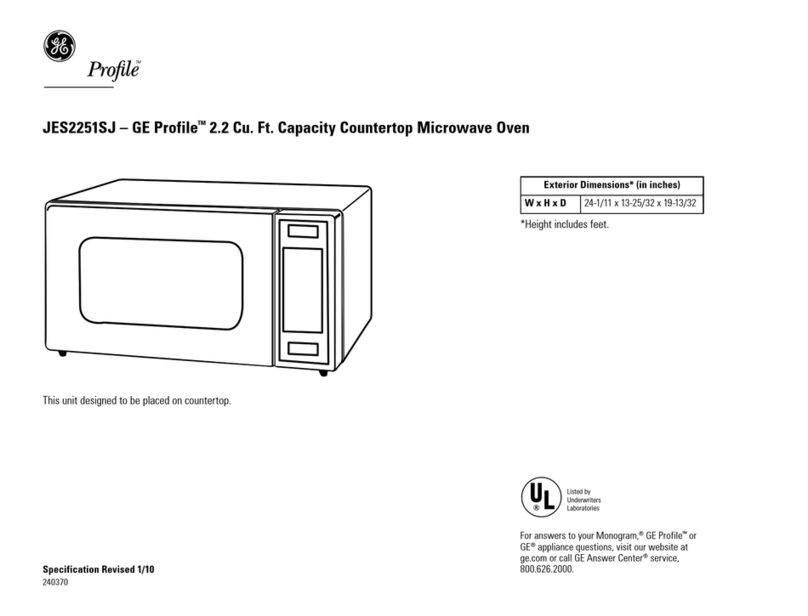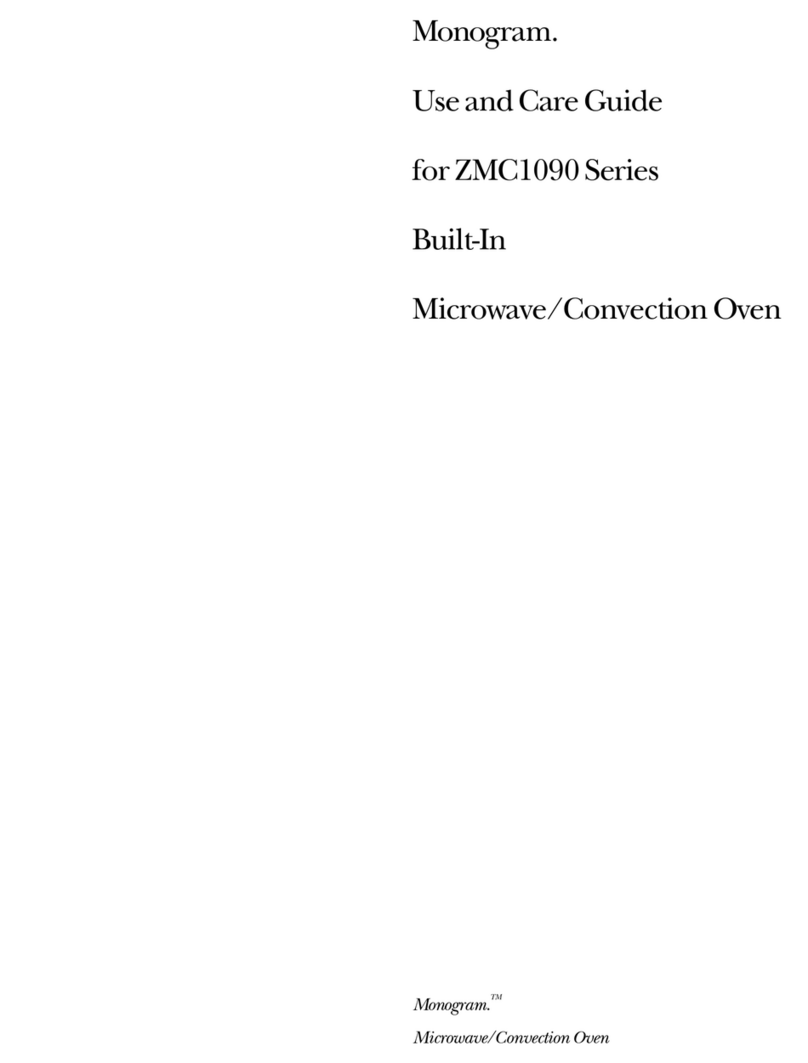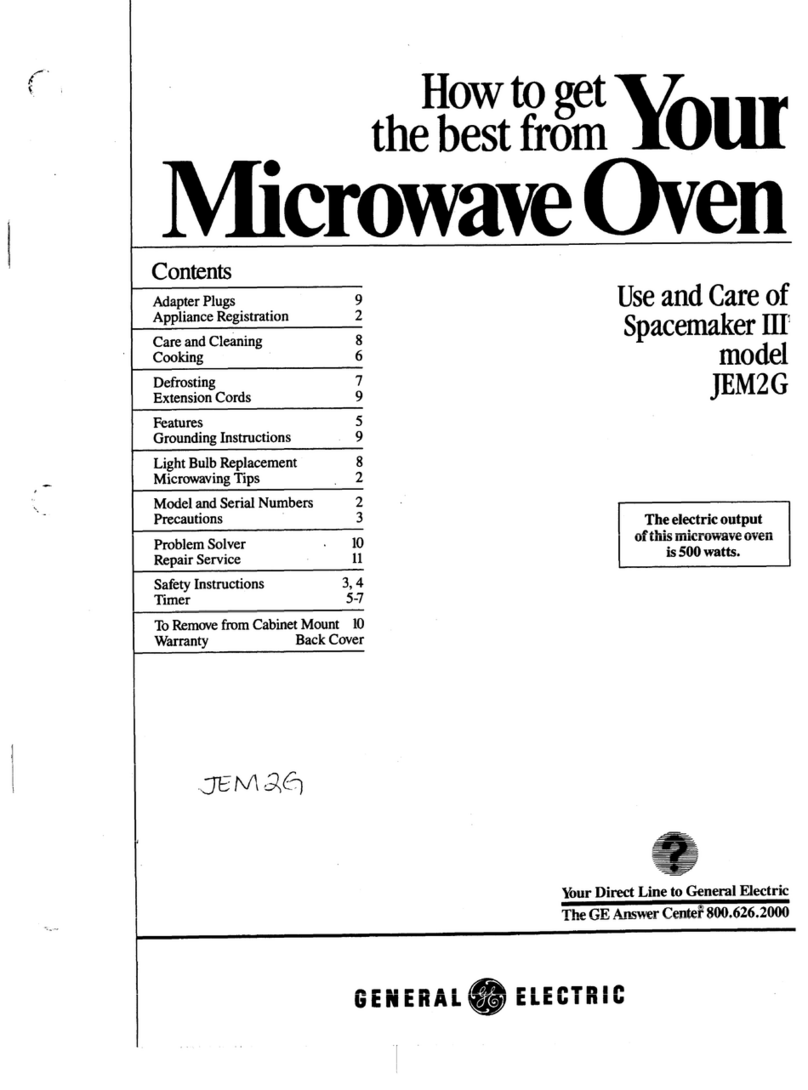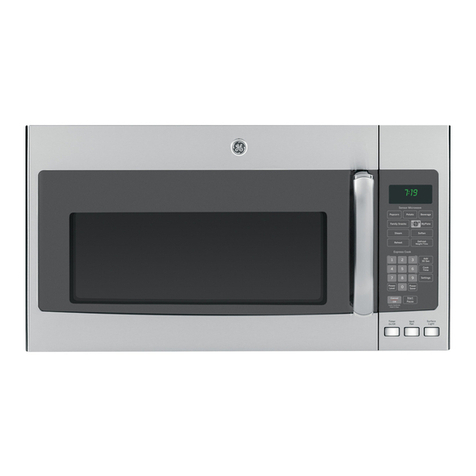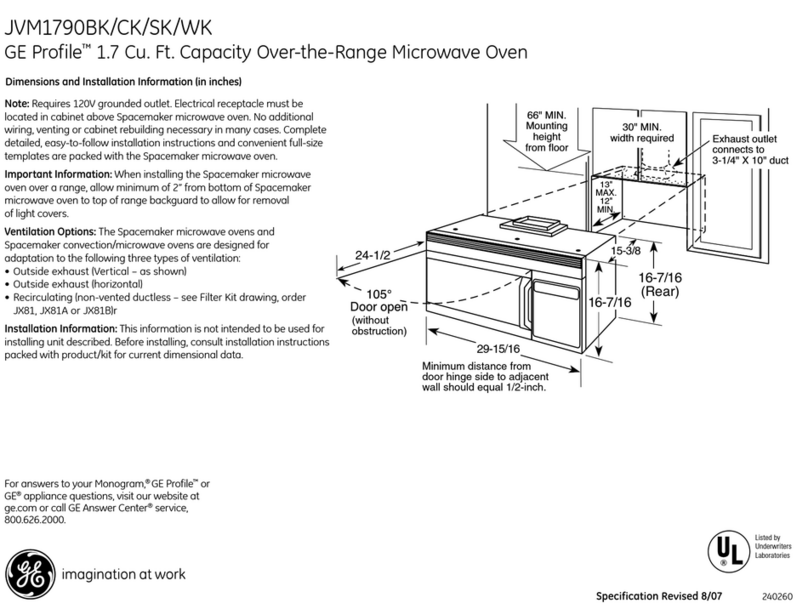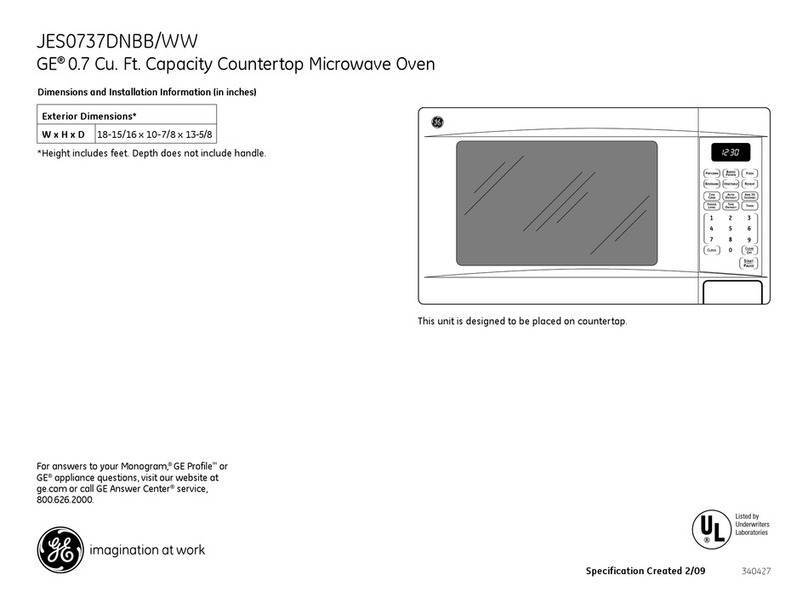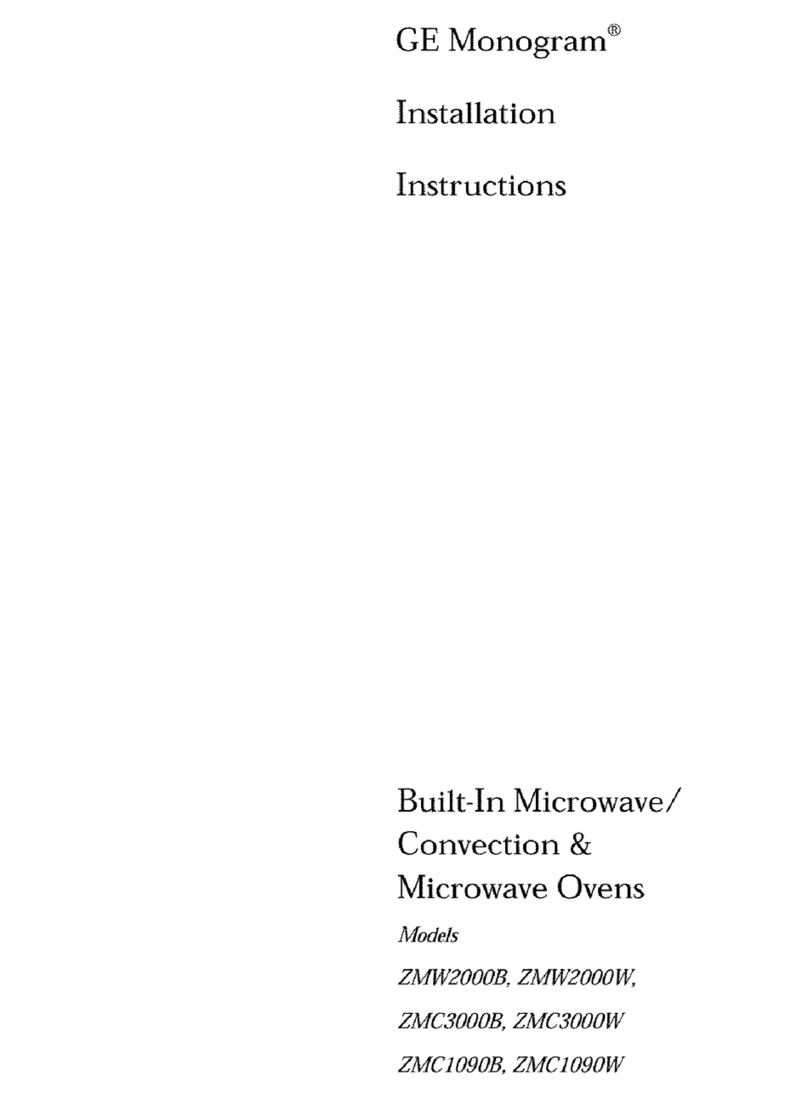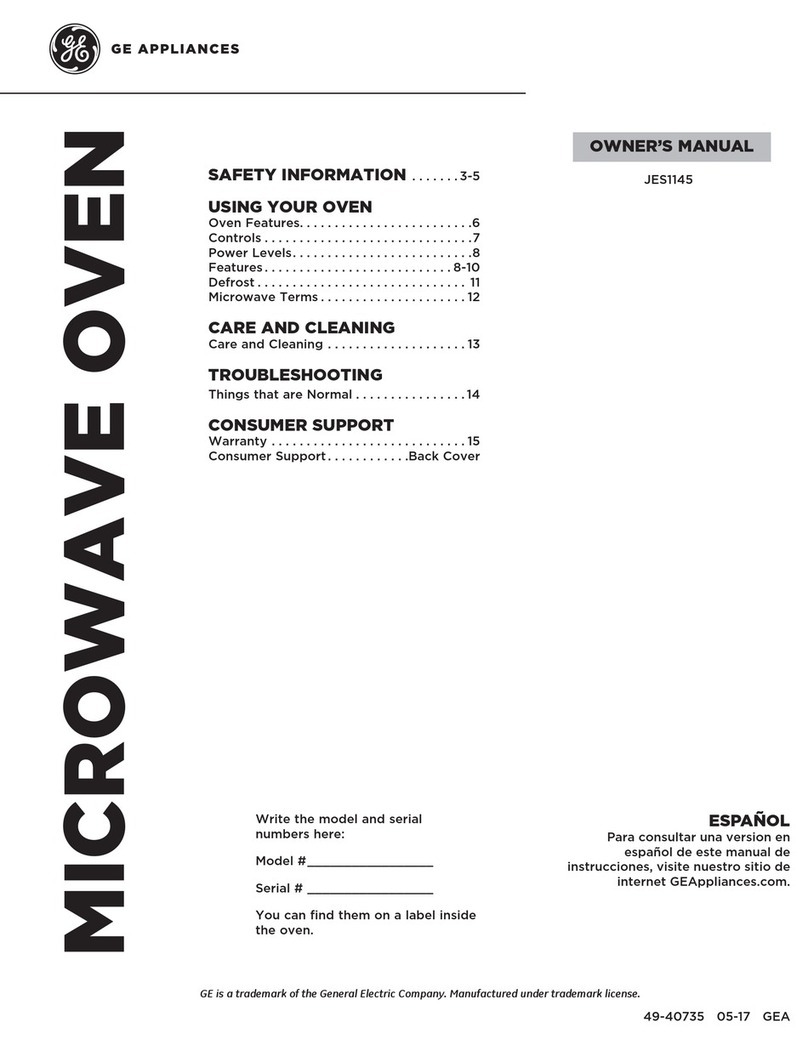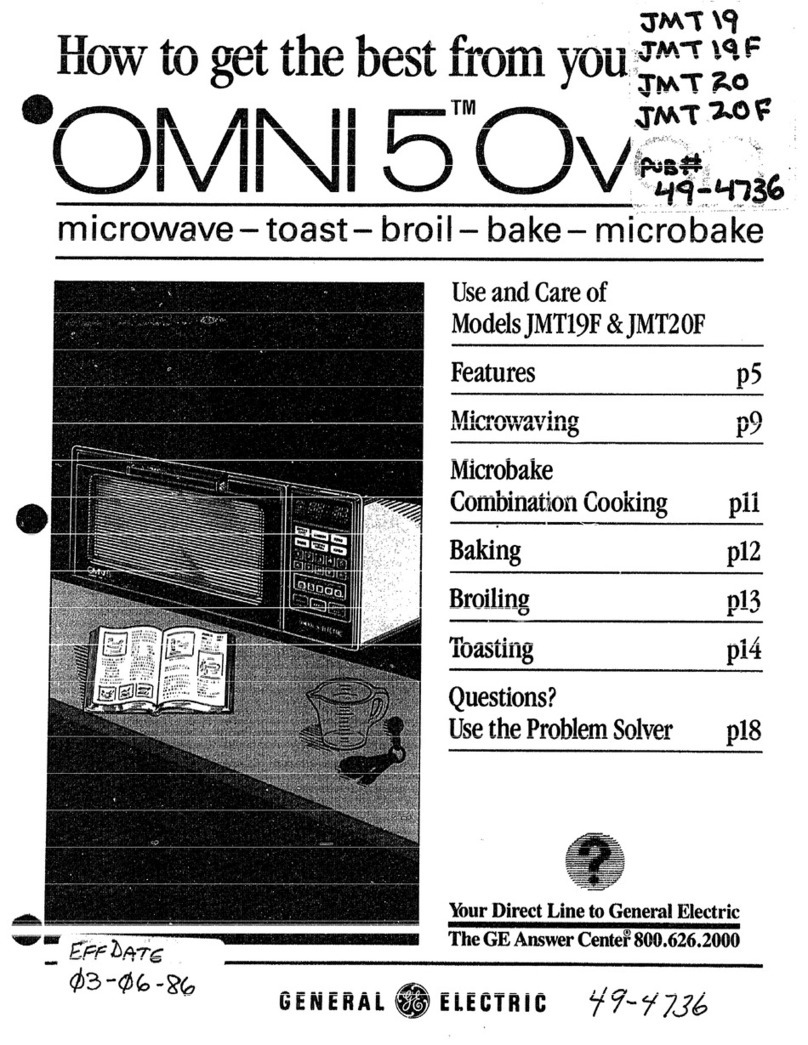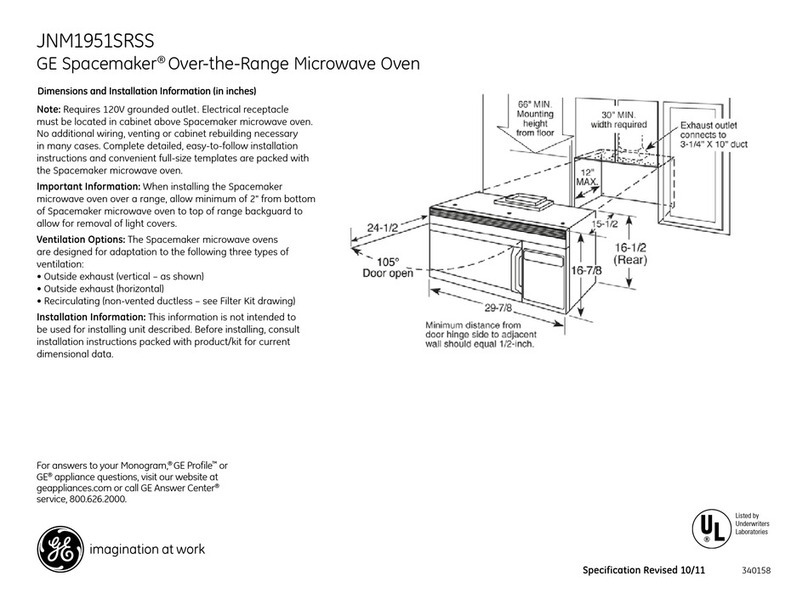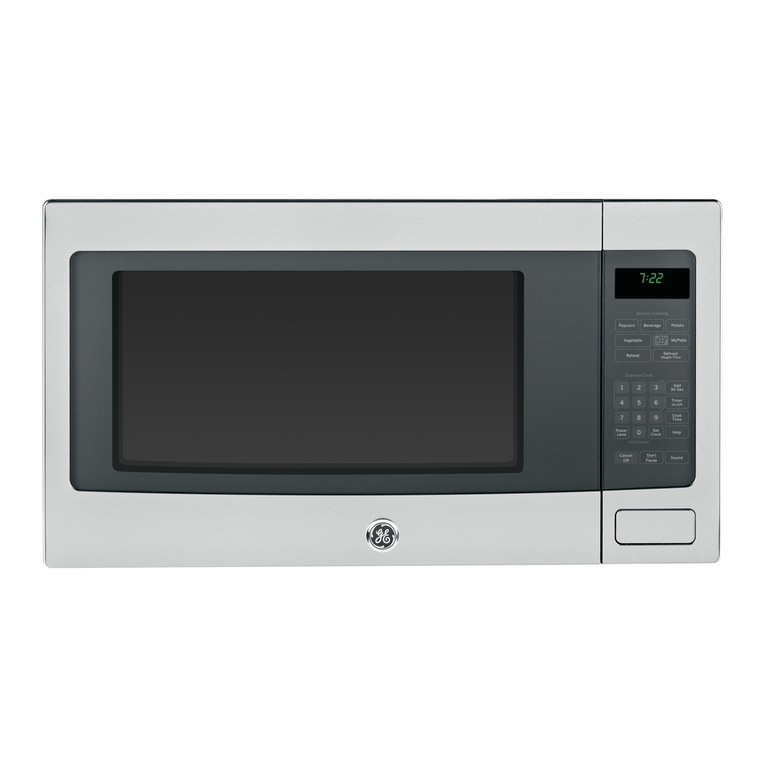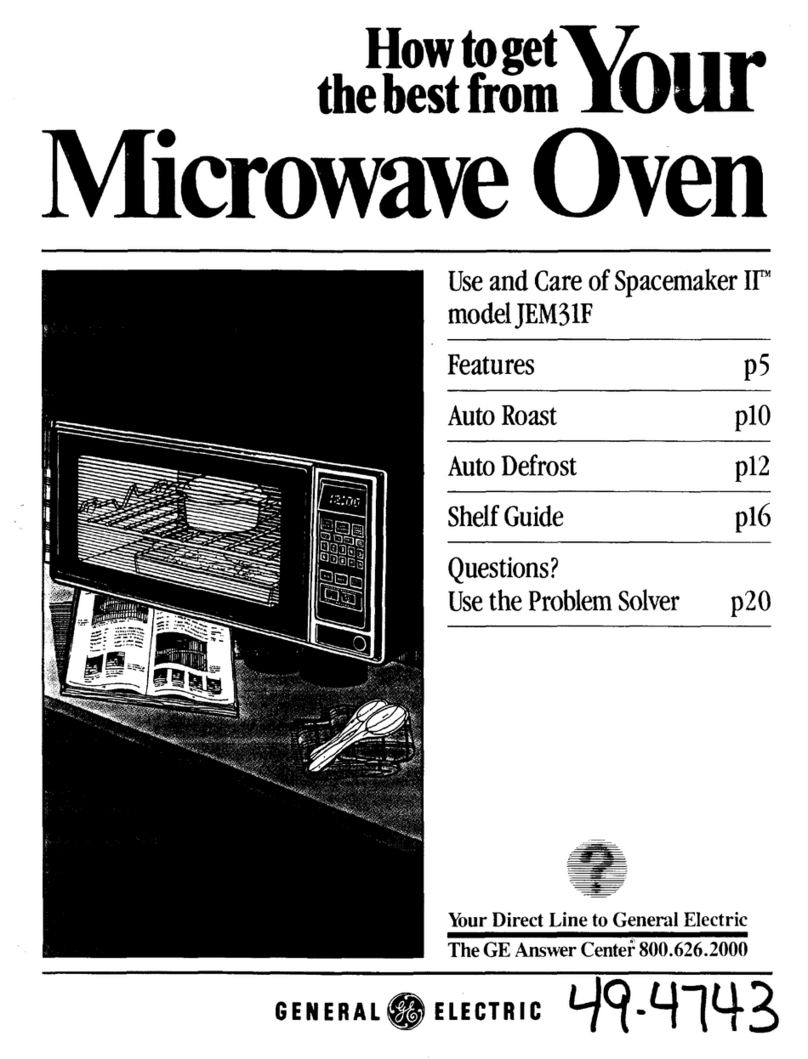I I
MICROWAVE OVEN
Defrosting
—
Time Defrost is designed for
speedy thawing of frozen food
and is one of the great advantages
of a microwave oven.
●
Power level 3 is automatically set
for defrosting, but you may change
this for more flexibility.
●
See your cookbook for defrosting
help.
To become better acquainted with
the defrost function, defrost frozen
pork chops by following the steps
below.
Step 1:
Place package of frozen
chops in the oven and close door.
Step 2:
Touch the TIME
- DEFROST pad. Display shows
“: O“ and “POWER
3:’
“ENTER
MICRO DEF TIME” flashes.
Step 3:
Select one half of the total
defrosting time recommended in
your cookbook. For example, touch
~,
O and O for 4 minutes. Display
shows
“4:00”
and “POWER
3:’
“MICRO DEF TIME” flashes.
How to Change Power
bel
After setting defrosting time,
touch POWER LEVEL pad,
then touch desired number for
new power level.
Step
4: Touch START pad.
“MICRO DEF TIME” and time,
counting down, show on display.
When cycle is completed, the oven
signals and flashes “End;’ then
automatically shuts off.
Step
5: Turn package over, close
door and repeat Steps 2 and 3 to set
remaining half of defrosting time.
Touch the START pad.
Step
6: When oven signals and
flashes
“EndX’
open door, remove
package and separate chops to
finish defrosting.
Defrosting
~ps
●
Foods frozen in paper or plastic
can be defrosted in the package.
●
For even defrosting, some foods
need to be broken up or separated
part of the way through the
defrosting time.
Q
Family-size, pre-packaged
frozen entrees can be defrosted
and microwaved. Remove from
foil container and place in a
microwave-safe dish.
● Check your cookbook for other
defrosting tips.
Questions and Answers
Q. When I press the START pad,
I hear a dull, thumping noise.
What is it?
A. This sound is normal. It is
letting you know the oven is using a
power level lower than 10 (HIGH).
Q. Can I defrost small items in
a hurry?
A. Yes, but they will need more
frequent attention than usual. Raise
the power level after entering the
time by touching the desired power
level pad. Power level 7 cuts the
total defrosting time about in 1/2;
power level 10cutsthetotaldefrosting
time to approximately 1/3. During
either, rotate or stir food frequently.
Q. Why don’t the defrosting
times in the cookbook seem right
for my food?
A. Cookbook times are averages.
Defrosting time can vary according
to the temperature in your freezer.
Set your oven for the time indicated
in your cookbook. If your food is
still not completely thawed at the
end of that time, reset your oven
and adjust the time accordingly.
Q.
Should all foods be completely
thawed before cooking?
A. Some foods should not be
completely thawed before cooking.
For example, fish cooks so quicHy
it is better to begin cooking while it
is still slightly frozen.
Q. Can I open the door during
defrosting to check on the
progress of my food?
A. Yes.
You may open the door at
any time during microwaving. To
resume defrosting, close the door
and press the START pad. The
oven begins operating if time is left
on the timer. If not. reset the timer.
9
